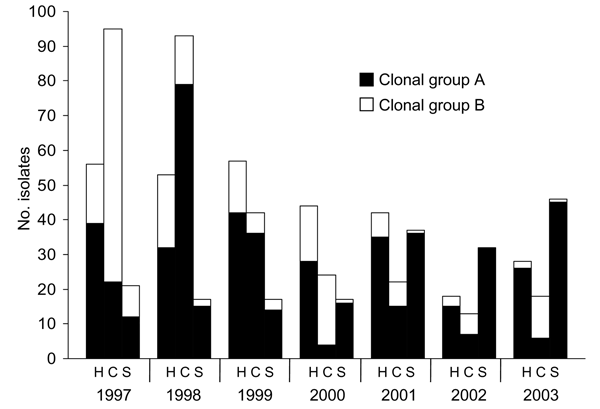Volume 11, Number 12—December 2005
Research
Antimicrobial-drug Susceptibility of Human and Animal Salmonella Typhimurium, Minnesota, 1997–2003
Figure 2

Figure 2. Distribution of Salmonella enterica serovar Typhimurium clonal group A pulsed-field gel electrophoresis (PFGE) subtypes and clonal group B PFGE subtypes among clinical isolates from humans and animals by species, Minnesota, 1997–2003. Clonal group A subtypes were <3 bands different from subtype TM5b by PFGE and were associated with resistance to ampicillin, chloramphenicol, streptomycin, sulfisoxazole, and tetracycline. Clonal group B PFGE subtypes were <3 bands different from subtype TM54 and were associated with resistance to ampicillin, kanamycin, streptomycin, sulfisoxazole, and tetracycline. H, C, and S indicate human, cattle, and swine isolates, respectively.
Page created: February 02, 2012
Page updated: February 02, 2012
Page reviewed: February 02, 2012
The conclusions, findings, and opinions expressed by authors contributing to this journal do not necessarily reflect the official position of the U.S. Department of Health and Human Services, the Public Health Service, the Centers for Disease Control and Prevention, or the authors' affiliated institutions. Use of trade names is for identification only and does not imply endorsement by any of the groups named above.